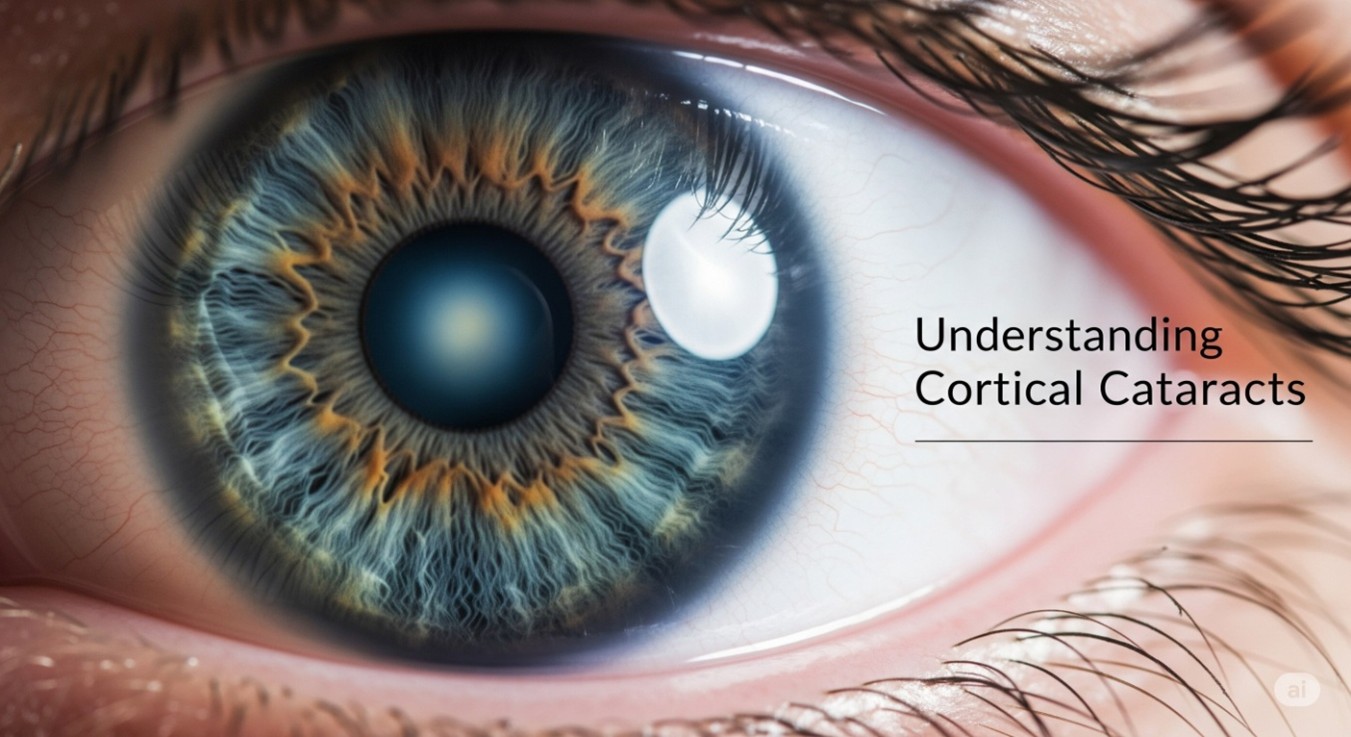
Cortical Cataract: What You Need to Know
Cataracts are one of the most prevalent eye conditions known to affect millions of people all over the world. This is especially prevalent as people age. Did you know that there are also various types of cataracts? Cortical cataracts are one of those types of cataracts. This article will explain what a cortical cataract is, what causes cortical cataracts, how they can be treated, and what we can do to reduce the risk of developing this eye condition.
Whether you are concerned about your own eye health or assisting a family member understand their recent diagnosis, this guide will walk you through what you need to know, simply and clearly.
What is a Cortical Cataract?
A cortical cataract is a cataract that forms in the cortex (the outer edge) of the lens. The lens focuses light onto your retina, allowing you to see sharply. When a cortical cataract forms, white, wedge-shaped streaks (which some people refer to as "spokes") appear along the edge of the lens and grow toward the center.
Over time, these cloudy streaks interfere with light coming through the lens, resulting in blurry or distorted vision.
Common Symptoms
Initially, a cortical cataract may be not exhibit startling problems; however you may start to notice increased:
- • Blurry or hazy vision
- • Glare or halos around lights (particularly at night)
- • Poor vision in bright sunlight
- • Contrast with depth perception
- • Frequent changes in eyeglass or contact lens prescription
- • Double vision in one eye
The symptoms can affect your activities of daily living such as reading, driving, or recognizing faces - especially in low-light.
Causes and Risk Factors
Cortical cataracts develop slowly over time, most often with aging being the primary cause, however, there are a plethora of other contributing risk factors that exist:
Causes:
• Age-related lens protein changes• The eye's oxidative stress (damage to the eye from free radicals)
Risk Factors:
• Diabetes – high blood sugar levels can lead to clarity loss in the lens• Excessive sun exposure – ultraviolet (UV) damage to the ocular tissues
• Smoking – linked to increased risk of all cataract types
• Excessive alcohol use
• Medications (especially long term steroid use)
• Injury or surgeries to the eye
• Family history of cataracts
While you cannot go back in time, you can manage risk factors to help decrease your risk to develop cataracts.
How Are Cortical Cataracts Diagnosed?
If you have experience a change in your vision, it is time to see an eye doctor. There are typically three steps for your eye doctor to diagnose a cortical cataract:
- • Full eye exam - This test would involve testing your vision as well as eye pressure.
- • Slit lamp examination - In this test the doctor uses a microscope with a bright light to look more closely at your lens.
- • Retinal exam - The doctor may also dilate your pupils so that he/she can examine your retina at the back of your eye more accurately.
The reason for these tests is not only to ascertain that you have a cataract, but to also determine the severity of its progression.
Treatment Options
In the beginning stages you may not be in need of treatment right away. Your doctor might suggest things like:
• Stronger prescription eyeglasses
• Brighter lights for reading
• Anti-glare sunglasses
These can possibly help treat your symptoms for a period of time. After, if the cataract affects your quality of life then surgery is the only treatment available.
Cataract Surgery
Cataract surgery is the safest procedure as well as the most performed surgery in the world. This is generally what to expect:
What Happens During Surgery?
• The surgeon takes out the blurry natural lens.
• It is substituted with a clear, plastic, man-made lens. It is called an intraocular lens or IOL.
• The surgery is quick (between 15 and 30 minutes) and done as an out patient so you can go home the same day.
Recovery:
• Most people notice an improvement in their vision within 1 to 3 days.
• You are fully healed in a few weeks.
• You will likely need to administer specialized eye drops and you may need to avoid certain activities (heavy lifting) while your eye is healing.
Results:
Cataract surgery has a very high rate of success. Most patients describe a meaningful improvement in their vision and they can reduce their dependence on glasses and in some cases eliminate the will ever need to wear glasses at all especially if they chose specialized IOLs (such as multifocal lenses or lenses that correct astigmatism).
Prevention Tips
• While you can’t prevent every cataract, there are ways to reduce your risk and slow their development through healthy habits
• Select sunglasses that block 100% of UV rays.
• Consume a diet rich in antioxidants (leafy green and fruit, as well as fish).
• Don't smoke – or get help to stop smoking.
• Manage chronic illness (ex. diabetes, high blood pressure).
• Limit alcohol use.
• Get regular eye exams - especially if you are over 40 years of age.
Early detection is the best approach. The earlier a cataract is found, the easier monitoring and/or treatment will be.
When to See a Doctor
You should see an eye care provider if any of the following occur:
• Changes in vision that impact your day to day activities
• Decreased ability to drive at night because of halos or glares
• Change in your prescription frequently
• Double vision or difficulty reading
The recommended frequency for an eye exam after age 60 is every 1-2 years, even with no symptoms. Regular exams are vital for your eye health.
Conclusion
Cortical cataracts are a common and treatable condition impacting the outer part of the lens. As cataracts develop, common symptoms are glare, blurry vision, or decreased ability to see in bright light. Although a complication usually takes time to develop, the effect upon your daily life can accumulate over time.
The good news is that if you seek assistance early and provide care, such as surgery if appropriate, then you can improve your vision to a point where you can participate in activities you enjoy.
If you think that you may have cataracts or if it has been a while since your last eye exam, please book an eye exam appointment at The Eye Care Clinic. Your eyes are worth caring for!
Book Consultation
-
- Phone :
- Email :
- Address :
-
- +91 91199 01070
- [email protected]
- Jaishankar Building, 2/176, opposite Shiv Murti, Sector 2, Vikas Nagar, Lucknow, Uttar Pradesh 226022


